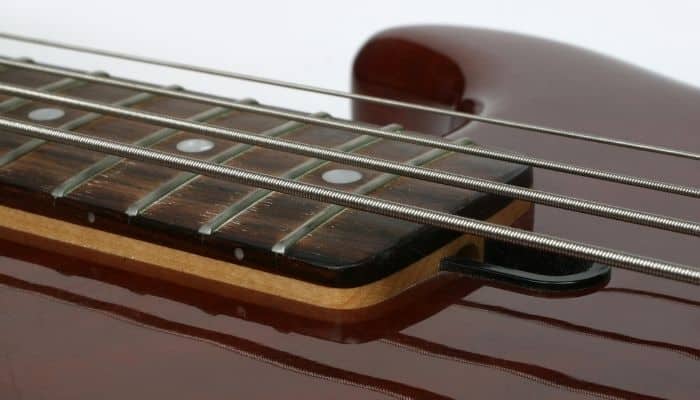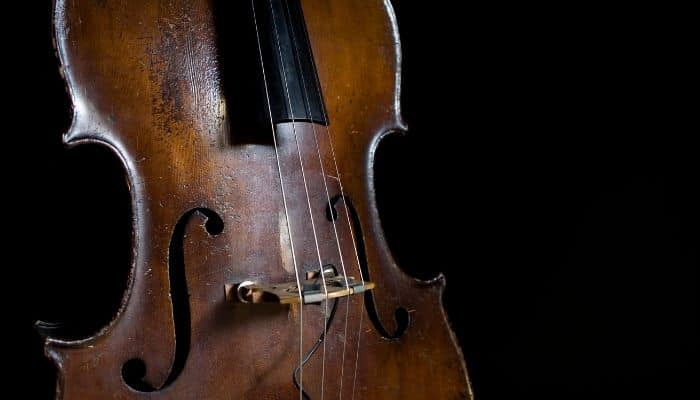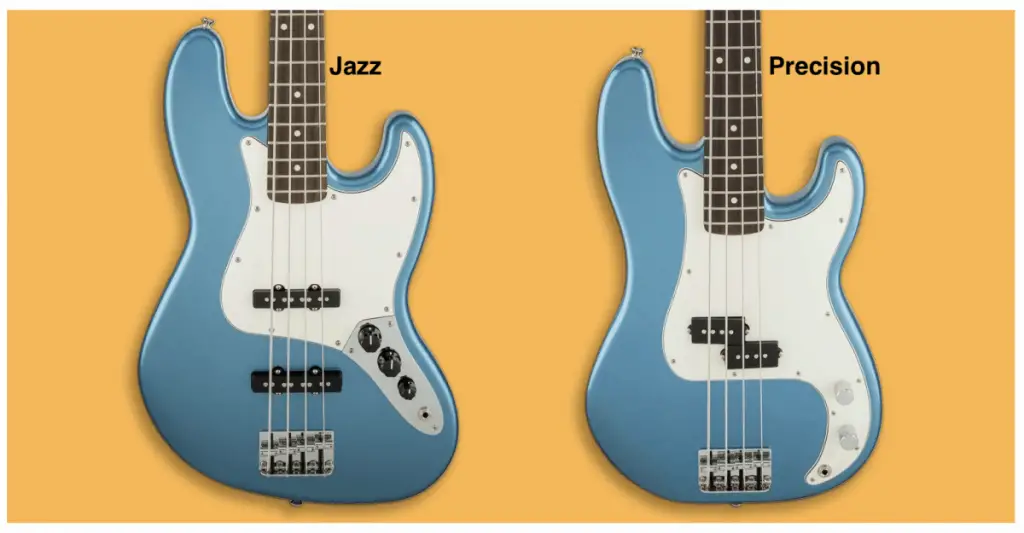The beginning of the 20th century featured some massive developments and technological changes in the music industry, including the invention of electric coil pick-ups, the electric guitar, and the guitar amplifier, which went on to revolutionize the state of music.
After players began using amplified guitars, they started to drown out their accompanying acoustic bass guitars, that is until the P Bass was created.
A P Bass is another term for an electric bass guitar, and it refers to the first model introduced by Leo Fender in 1953, which came with frets, the capacity to be electrically amplified, and a far more sleek design, allowing for it to be carried on the player’s shoulder.
Before Leo Fender invented the Precision Bass acoustic bass instruments were very large, bulky, and they were never amplified. They were almost always played acoustically, and this began to pose a problem once the electric guitar became more popular. According to Fender, legend has it that electric guitars began to drown out bass instruments, so Leo Fender came up with a solution.
The P-Bass Guitar – What is it and Where Does it Come from?

Fender’s official website says the P Bass was invented in response to the issue of competing volume from amplified, electric guitars, and it was supposed to be paired with the Fender Telecaster – which was a popular instrument at the time (and still is to this day.
Precision Bass Was Created in Response to the Problems of the Double Bass
At the time, musicians, especially bassists, didn’t have a lot of options but the P-Bass made it so they had frets and the ability to plug it into an amplifier. The P-Bass was just a lot easier for musicians to carry, especially when compared to a large double bass.
Before the creation of the P-bass, double bass players had no other choice but to carry around the instrument which is known for being incredibly large and cumbersome.
There’s no question that it’s one of the biggest instruments for a musician to carry, and, as it was noted above, it was becoming harder and harder for people to hear in the mix because of the amplification of other instruments like the electric guitar.
Furthermore, the double bass takes a particular type of instrumentalist to actually play it.

While it’s possible to play the double bass like a mainstream bass guitar, that is, plucked with one’s fingers, the double bass – which is actually considered as a violin instrument – was most commonly played with a bow.
In other words, the double bass was designed in such a way that the player had to have specialized knowledge in order to play it, including how to use a bow and how to position the instrument (I’ve written about some other differences too).
So this is where the electric bass guitar came from. The bass guitar, or the P-Bass, was designed specifically to get around all of these common problems.
Another “issue,” with the double bass (although, it honestly depends on how you look at it and what type of player you are), was the fact that the double bass didn’t come with any frets.
This goes back to the idea of the double bass player needing specialized knowledge. You needed to understand how to play the double bass, which was its own, unique instrument, with nuanced needs and skills in order to play it.
For instance, not having frets on it made it a little bit more difficult to play accurately.
And this is partly where the name of the instrument came from, that being, a “precision bass.” By adding frets to the bass instrument, it meant it was now a lot easier for the average bassist to play it.
Moreover, it also made it more like an electric guitar, so even a guitarist would be able to play it if they really needed to, because of some of the similarities between the instruments that I’ve already explored before.
Compare and contrast the instrument to a double bass, which a guitarist would still struggle with playing because most guitarists aren’t the best at using the “plucking technique;” they aren’t used to playing the instrument with a bow; and they don’t know how to play the instrument upright, which no one would ever do with a guitar.
The electric bass, on the other hand, doesn’t have the same acoustic qualities as the double bass. For instance, the double bass has a much deeper sound with more sustain and more bass.
The double bass just tends to sound a lot more powerful than the bass guitar, which makes sense, considering the size of the instrument alone. Additionally, the lack of frets on the double bass meant a slightly different tone.
As time went on, the bass guitar became a very important part of multiple genres, including pop music, blues, rhythm and blues, rock, soul, funk, and many others.
Since its initial popularity and its inception, the bass guitar has become easily one of the biggest instruments in the world, and a band is rarely complete without it.

As a side note, however, some metal bands have begun leaving out the bass guitarist because of the 8-string guitar, which has enough low sounds on it already.
The Electric Bass Wasn’t Accepted When it First Came Out
According to Wikipedia, the electric bass wasn’t popular or cool at all when it was first created, with most upright bassists looking at it with contempt.
This was the same attitude that other guitarists had toward the electric guitar when it was first created, especially the Telecaster.
Wikipedia says that it was Lionel Hampton’s band that first started to get serious about using the Precision Bass, whereas the Elvis Presley bassist, Bill Black, rocked the bass guitar while he and Elvis made Jailhouse Rock.
Apparently, Black didn’t like the precision bass when he first got his hands on it, and he even threw it on the ground when he couldn’t apply his double bass skills to it in the same way.
Wikipedia says Fender also delivered models to people like Shifty Henry, Mont Montgomery, the brother of Wes Montgomery.
By the time the 1950s had started to come to an end, the P-Bass, or the electric bass guitar, depending on what you want to call it, was finally becoming cool for players to use. People such as Carol Kaye and others had picked up on it.
What’s The Difference Between the P-Bass and the Jazz Bass

P-Bass and Jazz Basses are slightly different from each other in terms of how they look as well as the thickness of the nut and neck. The Precision Bass has a slightly thicker neck and nut than the Jazz Bass, and the Jazz Bass has an angled body near where the picking arm would lie.
Other than these minor differences, the Precision and Jazz bass are fairly similar to each other.
The P-Bass came out before the Jazz Bass, and it was simply designed to overcome the problems presented by the Double Bass, including being fretless, large, hard to carry; needing to be played with a bow or with one’s fingers; and a specialized skillset.
The Jazz Bass was developed as an instrument for musicians to buy if they already had the Jazzmaster from Fender, which was an electric guitar.
The Jazz Bass was supposed to be its accompanying counterpart, moreover, it was known for being more sleek looking and a bit easier to play on account of its slimmer neck and nut (more on nuts in my article).

 Written By :
Written By :